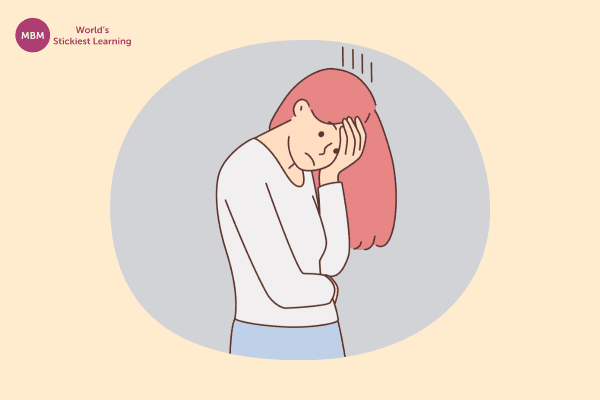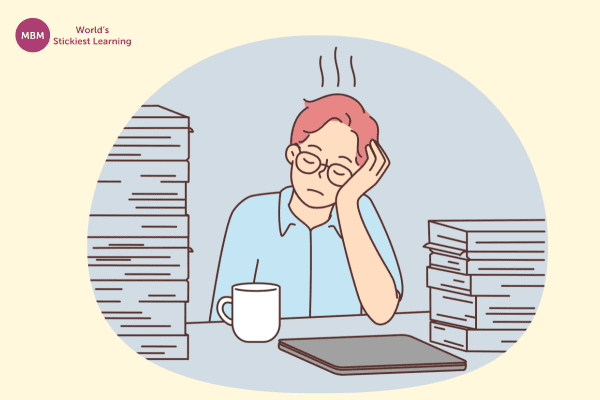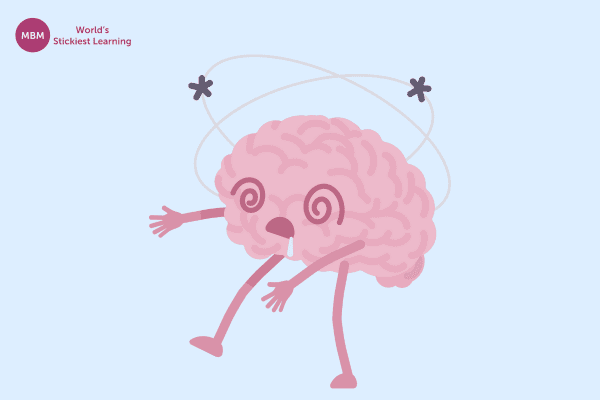Overwork is Danger #1, But Moral Stress Can Kill Too
Burnout syndrome, as described by the World Health Organization, results from chronic stress that hasn’t been successfully managed. According to Deloitte’s 2015 Workplace Burnout Survey, 77% of respondents reported experiences of burnout. Notably, this percentage rose to 84% among millennials. Furthermore, there are three dimensions to burnout: feelings of energy depletion or exhaustion; mental distancing from one’s job and feelings of negativity or cynicism; and a reduced ability to work effectively.
Why You Should Read This – Speaking From Experience
Updating this article in May 2024, MBM writer Charles Smith says: “Okay, so five years ago I was stressing at work. I wasn’t focused, my inbox never emptied, and I felt I was going nowhere. I thought about making changes but never did. And then guess what? I fell ill, and couldn’t work for months. Since then, I’ve been reflecting on the stress, burnout recovery cycle and how to step out if it looks like happening again, and articles like this help me.” Therefore, don’t wait a second longer to read about it!
4 Things To Grasp At The Outset
Burnout doesn’t go away with normal recovery tactics for dealing with tiredness, like taking time off, having a work-free weekend, or going on holiday. Furthermore, it isn’t a specific condition that’s medically diagnosed, but it can affect either your physical or mental health, or both, if you don’t acknowledge it. Consequently, burnout can creep up on you. However, most important of all – from experience – you CAN recover afterwards and go back to living happily.
What This Article Covers
We’re going to focus on burnout – what it is, and how it stops you from being productive and can make you more susceptible to illness. So, we’ll look at:
- Burnout – the statistics
- What is burnout in psychology?
- How to deal with burnout
- How can I recover from burnout? Rewiring your neural pathways – tried and tested ways to prevent and overcome burnout
- How do you know when you’re burnt out?
- What’s the difference between being tired and burning out?
- Burnout versus depression – know the difference
- What is job burnout?
- What are the symptoms of burnout?
- Burnout physical symptoms
- Mental burnout symptoms
- 3 types of burnout – overload, under-challenged, and habitual
- 12 stages of burnout
- 10 steps you can take to prevent burnout
- Safeguarding yourself against recurrence
- The new burnout danger – moral stress and other trauma
At the end of this article, we look at this new type of burnout, and what we can do about it. We look at what businesses can do to monitor burnout in general and contain it, and how to safeguard yourself. This also includes using Making Business Matter’s popular Mental Health Coaching Cards.
Now let’s look at the topics in the above list, starting with:
Burn Out – The Statistics

As mentioned at the start, Deloitte’s 2015 Workplace Burn Out Survey showed 3 out of 4 respondents (77%) reporting experiences of burnout, rising to 5 out of 6 (84%) of millennials. It points to an urgent need for businesses to take note of worker wellbeing.
In the UK, overwork and lack of managerial support are the biggest causes of burnout. Specifically, Mental Health UK’s January 2024 report reveals that 1 in 5 workers needed to take time off due to poor mental health caused by pressure or stress in the past year.
Furthermore, a new danger is emerging. Deloitte’s 2023 Gen Z and Millennial Survey shows workers who experience moral stress, such as a betrayal of what’s right by a boss or prolonged exposure to discrimination or an otherwise toxic work environment, are also at risk. We look at this in more detail later.
What is Burn Out in Psychology?
Burnout is a state of emotional, mental, and often physical exhaustion brought on by prolonged stress, and is most often caused by problems at work. Fatigue can be caused by physical exertion, whereas burnout is more likely to result from mental pain and stress. Common fatigue doesn’t usually cause mood and motivational problems. By contrast, burnout can affect overall mood and job satisfaction.
How to Deal With Burnout

Mind, the UK mental health charity, recommends:
- Take your annual leave – Time off is important, even if you stay home.
- Get enough sleep – Turn off your screens and do something else to relax, before you go to bed at night.
- Try to finish on time – Sometimes it feels easier to work late, to try and get everything done. Don’t make it a habit.
- Schedule time for fun – Make sure you set aside specific time for it. Having something not work-related to look forward to in your day can make a big difference.
- Ask for help – if you’re struggling with burnout, you might need time off work to recover. Talk to your manager as soon as you can. MBM writer Charles Smith speaks from experience, “In small companies, where there’s only one boss they’re part of the problem. Ask a colleague for their perspective, and talk to friends outside.” But before you do anything, read the rest of this article!
How Can I Recover From Burn Out?
- Admit you have a problem, and take steps to address it
- Talk to supervisors, colleagues, and friends. Lots of us have been here
- Get enough sleep
- Enjoy relaxing activities
- Take exercise
- Practise mindfulness
- Get professional support
- Think about changing jobs
Rewiring Your Neural Pathways – Tried and Tested Ways to Prevent and Overcome Burn Out
The recovery time after burnout isn’t fixed, but the sooner you start, the better. You can also work on changing how your mind works.

With training, scientists have shown we can rewire the neural pathways regulating our emotions, thoughts and reactions. This can help us adapt to challenging situations much better. It can take time, but the key lies in changing your brain’s automatic response to a scenario.
This isn’t new, as humans have been doing it for thousands of years. Expressing gratitude, showing and practising empathy for others, and self-compassion are key ways to change your neural pathways and your brain’s automatic responses to things that cause you frustration. So is, practising forgiveness – actively letting go of the pain, and the people who caused it, can be hard.
But it does mean you’re recognising that what happened is in the past, and moving on. MBM writer Charles Smith says he took steps: “I emailed my old boss and said sorry for being so difficult.” Rewiring your brain like this means you can regulate your thoughts more easily.
How Do You Know When You’re Burnt Out?
When people talk about being burnt out, they generally mean:
- Tired or exhausted
- Lacking enthusiasm, or feeling negativity towards their job
- Feeling unable to do their job properly
- Impaired judgement
- Inability to make effective decisions
- Loss of motivation
- Being more prone to physical ailments
Symptoms and signs of exhaustion from burnout can include:
- Always feeling tired or sleepy
- Regular bouts of dizziness
- Headaches or migraines
Another sign of burnout is excessive use of substances, including alcohol, drugs, and prescription medicines. If you find yourself drinking more, it’s time to practise self-care.
What’s The Difference Between Being Tired, Stressed, and Burning Out?

As we’ve said, burnout syndrome, as described by the World Health Organisation, results from chronic stress that hasn’t been successfully managed. All in all, tiredness usually passes when you get rest and recovery time. By contrast, when you’re stressed, you:
- Put in too much effort
- Feel emotions more strongly
- Become hyperactive and anxious
- Have less energy
- Finding it takes a physical toll
Mental Health UK’s January 2024 report revealed over a third (35%) of adults experienced high or extreme levels of pressure and stress. 1 in 5 workers (20%) needed to take time off due to poor mental health caused by pressure or stress in the past year.
Burnout is longer lasting than stress, characterised by these feelings:
- Demotivated
- Tired or drained most of the time
- Helpless, trapped and/or defeated
- Detached/alone in the world
- Cynical or negative
- Putting in any effort is difficult
- Blunted emotionally
Burn Out Versus Depression – Know The Difference
The most common kind of burnout, overload, responds to having a rest or taking time off, but depression is longer lasting and needs medical attention and proper treatment. If you think you’re heading for depression, start by working out what’s happening, and get help. Talk to your doctor, and be honest.
What is Job Burn Out?
There are various known causes of burnout at work:
- Unmanageable workloads
- A competitive workplace
- The job itself: work is either boring, routine, chaotic, or high-stress
- Personal problems like bereavement and relationship breakdown can contribute to job burnout if you aren’t supported
- Few supportive relationships at work
- Work is too demanding
- Unfair treatment
- Confusing responsibilities
- Deadline pressure
- Not enough downtime
- Difficulty maintaining a healthy work/life balance
- Feeling life is out of control
- Not feeling recognised or rewarded
- I am taking on too much without help
- Lack of sleep
Furthermore, you need to be aware of these points:
- People with certain personality traits are understood to be more prone to burnout – type ‘A’ personalities focused on achievement, perfectionism, pessimism, and people needing to have control.
- Specific jobs have a higher-than-average risk of burnout. These include sales, healthcare, carers, teaching, security, and law enforcement.
- And don’t forget, grief lowers your window of tolerance, and your effectiveness, because it’s unpredictable. So talk to your manager about it.
What Are The Symptoms of Burn Out?
Burnout’s physical symptoms include:
- Increased tendency to illness and physical problems
- Exhaustion
- Tiredness
- No energy
- Physical pain
- Bowel problems
- Sick
- Headaches
- Insomnia
Mental burnout symptoms include:
- Chronic absence and job dissatisfaction
- Inability to deal with work and personal matters
- Sense of alienation from the workgroup and activities
- Reduced performance: no energy left
- Self-doubt, defeatism: isolated, cynical, and incapable of decisions or actions
3 Types of Burn Out – Overload, Underchallenged, Habitual
The experts say burnout can take three forms:
1- Overload:
This ‘classic’ form of burnout is a state of exhaustion caused by constantly feeling swamped by emotional, physical and mental fatigue. You can “step back” from overload – provided you recognise it and deal with it. Left unchecked, it can progress into
2- Habitual:
You experience chronic mental and physical fatigue. Unaddressed, this can have more serious consequences, and develop into depression and even suicidal ideations.
You should also be aware of this other kind of burnout:
3- Underchallenged:
This is where you’re unappreciated and bored at work, lose motivation, and show signs of what looks much like overload burnout. It’s insidious, creeping up on you over time. Sure, it’s nowhere as debilitating as either of the others, but you still need to address it, as it can lead to impostor syndrome, lack of confidence in your abilities, and not being ‘present’ in your work life and outside.
The 12 Stages of Burnout
The psychologist Herbert Freudenberger first described burnout in 1974, while researching the effects that working in a public addiction clinic was having on his colleagues. He developed the 12 stages of burnout in conjunction with Gail North. Knowing these stages and watching them as they escalate helps employees to be conscious of burnout as it happens to them, and managers to keep a lookout.
- Compulsive Ambition: “I must prove myself”
- Working Harder: “I must do more”
- Neglecting Needs: “I don’t have time for that”
- Avoiding Conflict: “Nothing is wrong”
- Revising Values: “This is more important”
- Denying Problems: “The problem is others”
- Withdrawal: “I need time alone”
- Concerning Others: “I’m fine, stop worrying”
- Depersonalistaiton: “I just need to make it through today”
- Sense of Emptiness: “I don’t feel much anymore”
- Depression: “Nothing really matters”
- Final Stage of Burnout: “I can’t go on”
So, here’s what you can do to look after yourself:
10 Steps To Take To Prevent Burn Out:

- Take regular breaks
- Seek help in managing stress
- Engage socially
- Change your work attitude
- Set yourself new priorities
- Take exercise
- Eat healthily
- Reduce screen time on devices
- Keep regular hours.
- Last but not least, work on being self-aware, and ‘present’
The New Danger – Moral Stress and Trauma
A 2022 research study: Links Between Burnout & Moral Injury’ study from the University of Sheffield, has found a new type of burnout is emerging due to an increase in moral injury in workplace settings.
All in all, this kind of burnout isn’t about overwork. It’s about misaligned purpose and values in the workplace leading to moral stress and cognitive and emotional impairment. We’ll look at these in a moment.
Potentially morally injurious events are events that challenge an individual’s moral beliefs. These events can be directly experienced, witnessed, or learned about. For example, they include a colleague’s transgression or betrayal, unfair redundancy selection, failure to act on a whistleblowing complaint, and humiliation, manipulation, or control by managers or leadership. Additionally, workers who experience discrimination from their boss or discriminatory language and bullying from colleagues because they are “other” in some way can develop PTSD-like symptoms.
So, let’s explore this:
- Moral Stress and Moral Injury – This is the damage to your conscience or moral compass which can occur when someone engages in, fails to prevent, or witnesses acts that conflict with their values or beliefs. Additionally, it can also occur when an individual experiences betrayal by people they trust, especially when this is perceived as avoidable or they are powerless to change it.
- Cognitive and Emotional Impairment – This can be the result of a traumatic event or toxic environment that violates a person’s moral or ethical code. Moreover, it has a similar effect to PTSD and leads to brain fog, forgetfulness, slower reaction time, and a general inability to be engaged in present actions.
Well, What Can Businesses Do to Prevent Staff from Burning Out?
Given too much workload is one of the biggest causes of job burnout, businesses may need to look at making structural organisational changes. So don’t wait for it to happen! Employers can start the process by measuring burnout and wellbeing, and deciding what can be done.
Areas to research include:
- Burnout risk assessment: assessing overall team risk but also individual employee engagement, productivity, and moral injury
- Overall mood and satisfaction rating of the business
- The need for process change, or other business improvement
- Reviewing existing well-being provisions
- Monitoring discrimination and bullying, and clamping down on it
While pulse surveys and exit interviews are formal ways to evaluate the situation, they should go hand in hand with open communication between managers and employees to find out what’s happening.
So How Are Businesses Supporting Employee Wellbeing?
Well, here are some examples:
- Flexi-working
- Trialing 4-day weeks
- Training and supporting Mental Health First Aiders
- Appointing Mental Health ambassadors, champions and advocates
- Supporting employees who need outside help, by letting them flex their work and access it in work time on the phone or online
- More face-to-face meetings
- Team building exercises
- Personality profiling courses for teams
- Offering financial well-being support
- Salary increases due to the cost-of-living crisis
- Giving extra paid leave
AND FINALLY: How to Safeguard Yourself Against Burn Out Recurring

We’re creatures of habit, in our thoughts as much as in our likes and behaviours. So, stay in touch with yourself, check yourself out every so often, and read more about all this. Also, you can find plenty of useful resources online for dealing with burnout, at mind.org.uk, the Mental Health at Work website, Mental Health UK, and Headspace.
Here Are 12 Steps to Protect Yourself From Another Burn Out
- First, understand the problem that you had
- Next, consider what went wrong before, and how to avoid a repeat
- Make changes: alter the conditions, or leave the situation
- After that, think about what matters in your life
- Prioritise your health and well-being
- Keep a healthy distance
- Have positive relationships
- Set boundaries for acceptable behaviours
- Say ‘no,’ and agree deadlines
- Develop coping strategies for next time round
- Crucially, practise self-care
- Also, join support and social groups
And Don’t Forget, Talk to Your Team and Help Them Manage Their Mental Health, with Making Business Matter’s Mental Health Coaching Cards

>> Mental Health Coaching Cards <<
Updated on: May 31, 2024




